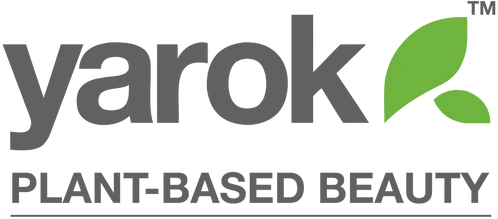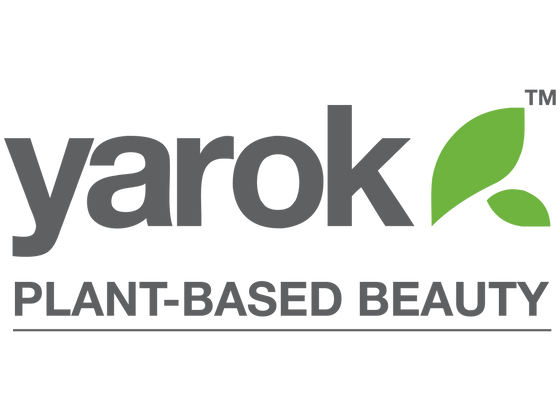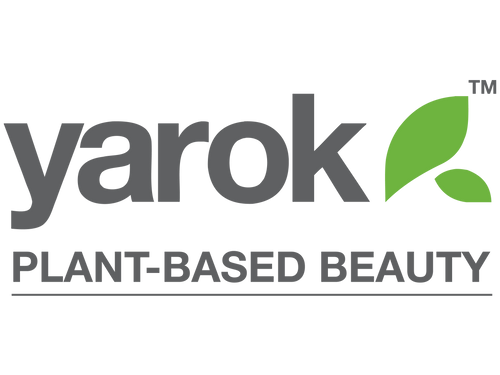Are Child Shampoo and Hair Products Safe? Avoid Toxic Ingredients

Dangerous Ingredients to Avoid in Hair Care Products for Children and Babies
As parents and caretakers, our number one priority is the health and safety of our children! The majority of our attention is typically spent keeping our children away from toxic, harmful ingredients. When we stroll through the beauty aisle and see big brand name baby andchild haircare products… in good faith, we assume they are safe! Is this always the case?
Unfortunately, no.
Should we truly worry about the ingredients found in baby and child hair formulas?
Yes. According to the Campaign for Safer Cosmetics, “61% of children’s bath products tested contained both formaldehyde and 1,4 dioxane.”(1) False advertising can lead consumers to believe these products are safe and even healthy, when in fact, they contain harmful and furthermore dangerous ingredients
Parents and caretakers, you have enough to worry about. We’re making it simple for you and breaking down the top ingredients to avoid in haircare products for children and babies.
Top Toxins to Avoid in Children and Baby Haircare Products
We can’t stress enough how important it is to read your labels! Be informed consumers; know what ingredients to avoid when shopping for haircare products.
1.Formaldehyde
If you see products that advertise smooth or straight hair, chances are they contain formaldehyde. Formaldehyde is a carcinogenic (cancer-causing) chemical found in many well-known children’s products. To put it into perspective, Formaldehyde is used in the production of many building materials and household products… do you really want this in your child’s hair?
According to the National Cancer Institute, this colorless gas can lead to burning sensations in the eyes, nose and throat; coughing, wheezing, nausea and skin irritation (2). Formaldehyde may be disguised with different names. Here are the ingredients to avoid:
Avoid any of these names/ingredients: Formaldehyde, formalin, quaternium-15, dimethyl-dimethyl (DMDM) hydantoin, methylene glycol, imidazolidinyl urea, diazolidinyl urea, sodium hydroxymethylglycinate, 2-bromo-2-nitropropane-1,3-diol (bromopol).
2. 1, 4 dioxane
What’s not to love about a bubble bath? Once you learn the ingredients that create bubbles, you will learn exactly what’s not to love! The ingredient 1,4 dioxane is a carcinogen linked to organ toxicity. According to Safer Cosmetics, this ingredient is found in 22% of over 25,000 tested cosemetics… BUT you may not find it on the ingredient label (3). How is this so? The toxic ingredient 1,4 Dioxane is actually formed when multiple ingredients come together to form this substance. Look out for any products that promote suds, bubbles, liquid soaps, as well as the ingredients listed below.
Avoid any of these names/ingredients: polyethylene, polyethylene glycol, polyoxyethylene, sodium laureth sulfate, ceteareth, oleth, oxynol, ingredients with -xynol, ceteareth or oleth, PEG compounds, ingredients ending with -eth, and those containing the words laureth, laureate, myrrh.
3. Parabens
What are parabens? Parabens are preservatives found in haircare and skincare used to prolong the shelf life of products. These harmful substances classified as xenoestrogens, meaning they have estrogenic effects in the body. Studies show the exposure of parabens is linked to breast cancer and tumor and should be avoided whenever possible (4).
Avoid any of these ingredients or names: paraben, propylparaben, benzylparaben, methyl- paraben, or butylparaben
4. Fragrance
While the word “fragrance” may seem harmless, there is no telling what the word truly encompasses. Just one fragrance (think, lavender fragrance) may be made up of thousands of chemicals! If you’ve seen this phrase on an ingredient bottle and thought the scent was derived straight from lavender, unfortunately, you’ve been misinformed. Fragrances are often artificial ingredients, formulated in labs and created by chemicals.
Prolonged exposure to fragrance is associated with neurotoxicity, infertility, birth defects, cancer, hormone disruption, exacerbation of allergies, sinus attacks, asthma, and other respiratory conditions, according to studies by BCPPand Safe Cosmetics(5,6)
Avoid the name fragrance or unscented and instead opt for fragrance-free products or those that utilize essential oils
* While essential oils are natural ingredients from Mother Nature, it's important to remember these are potent and powerful oils! Essential oils should always be used in combination with a carrier oil to dilute the potency. Children may be more sensitive to essential oils. Please consult with your Healthcare Provider or Medical Doctor for any concerns you may have. To learn more about Essential Oils, the best ways to use, and the powerful benefits, read our Blog.
Make the Switch to Yarok
Feed Your Moisture Shampoo:
Skip the bubbles for healthy and safety. Feed Your Moisturemay not lather, but that doesn’t mean it’s not working its cleansing magic. Yarok’s moisturizing shampoo will gently cleanse hair with a mixture of vitamin-infused water without stripping the hair of natural oils.
Ingredients: Aqua (Vitamin Infused Water}, Cocos Nucifera (Saponified Coconut), Fair Trade Organic African Black Soap, Organic Argania Spinosa L. (Argan Oil), Organic Oils of: Cannabis Sativa (Hemp Seed), Simmondsia Chinensis (Jojoba), Vitis Vinifera (Grape Seed), Prunus armeniaca (Apricot) Kernel, Oenothera biennis (Evening Primrose); Achillea Millefolium (Organic Yarrow), Organic Guar Gum (aka guaran); Organic Herbal Extracts of: Rosmarinus OfficinaJis (Rosemary), Certified Organic Arctium Lappa (Burdock), Equisetum Hyemale (Horsetail), Certified Organic Salvia Officinalis (Sage), Certified Organic Origanum Vulgare (Oregano), Certified Organic Thymus Vulgaris (Thyme), Certified Organic Lavandula Angustifolia (Lavender}, Certified Organic Mentha Piperita (Peppermint), Certified Organic Hydrastis Canadensis (Goldenseal), Certified Organic Cinnamomum Zeylanicum (Cinnamon), Certified Organic Citrus Limonum (Lemon) Peel; Plant Sourced Kosher Vegan Xanthan Gum and/or Manihot Esculenta (Organic Yuca Starch); Potassium Sorbate; may contain Elaeis Guineensis (Palm Kernel) Extract, Limnanthes Alba (Meadowfoam Seed Oil), Acetic Acid (Vinegar); Organic Essential Oils of: Citrus Sinensis (Sweet Orange), Citrus Aurantium Var. Amara (Bitter Orange), Cananga Odorata (Ylang Ylang).
Feed Your Ends Hair Detangler
Is your child’s hair as wild as their imagination (and energy)? Reach for Yarok’s Feed Your Ends Detangler. This nourishing formula also works as a leave in conditioner and heat protectant and can be used on both wet and dry hair. For detangling, use all over damp hair (from roots to ends) and feel confident knowing you are providing your child with the ultimate hair nutrients.
Ingredients:Vitamin Aqua (Water), Certified Organic Simmondsia Hinensis (Jojoba) Oil, Pure Olea Europaea (Olive) Oil, Organic Vitis Vinifera (Grapeseed) Oil, Organic Prunus Armeniaca (Apricot) Oil, Organic Oenothera Biennis (Primrose) Oil, Pure Plant-Sourced Kosher & Vegan Xanthan Gum, Plant Sourced Kosher & Vegan Potassium Sorbate; Essential Oils of: Organic Rosmarinus Officinalis (Rosemary), Organic Litsea Cubeba (May Chang).
Safety Ensured with Yarok
Rest assured, all Yarok products are
Toxin-free
Free from sulfates, parabens, gluten and fragrance
100% organic, vegan and cruelty-free
Made with ingredients found straight from nature
Feel confident using Yarok products on your children, knowing you are benefiting both their hair and their health. Once you make the switch to Yarok, you’ll never look back. Healthy, happy hair for both parents and children, all in one bottle.
Please keep in mind all Yarok products are made with 100% natural ingredients, including pure essential oils. While Yarok products are non-toxic and safe for all children, your child may still be sensitive or allergic to any natural ingredient. We encourage you to consult with your physician or Doctor with any concerns.
REFERENCES
(1) Safecosmetics.Org, 2020, http://www.safecosmetics.org/wp-content/uploads/2016/12/NoMoreToxicTub_Report_Mar09.pdf.
(2) "Formaldehyde And Cancer Risk". National Cancer Institute, 2020, https://www.cancer.gov/about-cancer/causes-prevention/risk/substances/formaldehyde/formaldehyde-fact-sheet
(3) "1,4-dioxane - Safe Cosmetics", Safe Cosmetics, 2020. [Online]. Available: https://www.safecosmetics.org/get-the-facts/chemicals-of-concern/14-dioxane/. [Accessed: 18- Nov- 2020]
(4) Darbre PD, Aljarrah A, Miller WR, Coldham NG, Sauer MJ, Pope GS. Concentrations of parabens in human breast tumours. J Appl Toxicol. 2004 Jan-Feb;24(1):5-13. doi: 10.1002/jat.958. PMID: 14745841. https://pubmed.ncbi.nlm.nih.gov/14745841/
(5) "Right to Know: Exposing Toxic Fragrance Chemicals Report - Breast Cancer Prevention Partners (BCPP)", Breast Cancer Prevention Partners (BCPP), 2020. [Online]. Available: https://www.bcpp.org/resource/right-to-know-exposing-toxic-fragrance-chemicals-report/. [Accessed: 18- Nov- 2020]
(6) "Health Effects and Chemical of Concern - Safe Cosmetics", Safe Cosmetics, 2020. [Online]. Available: http://www.safecosmetics.org/fragrance-disclosure/learn-more/health-effects-chemical-concern/. [Accessed: 18- Nov- 2020]











